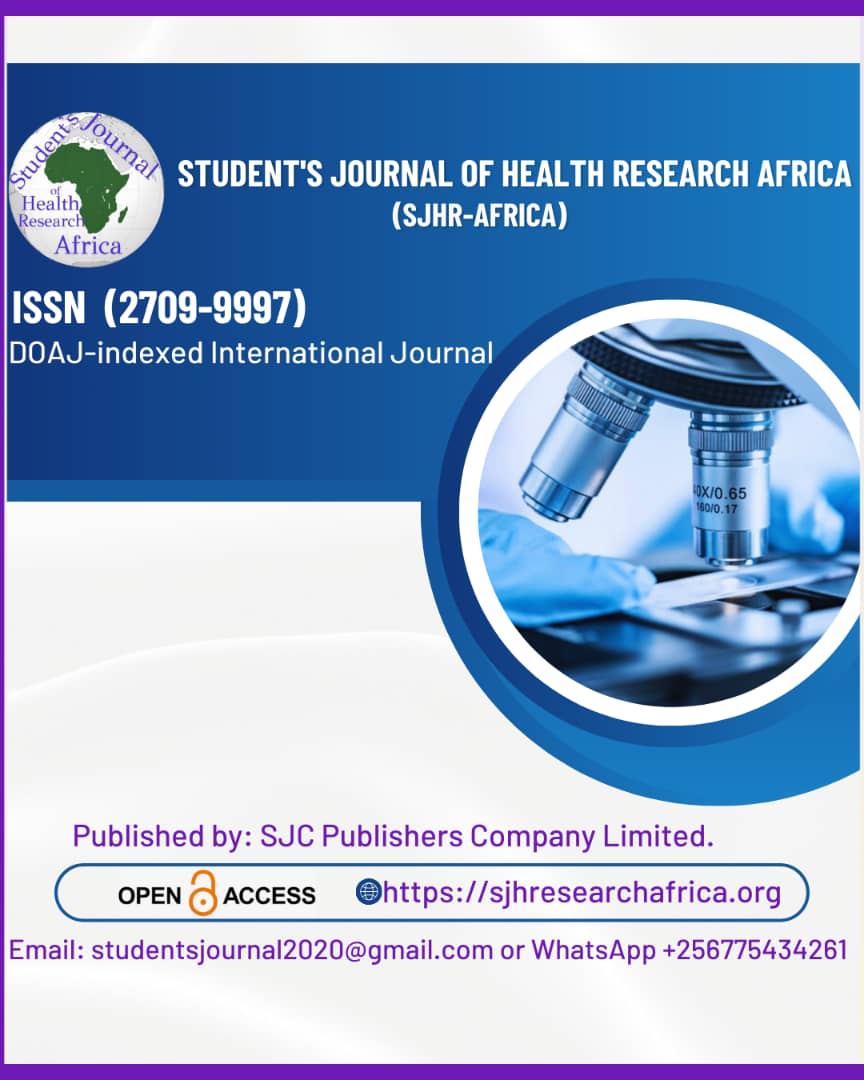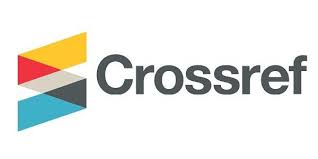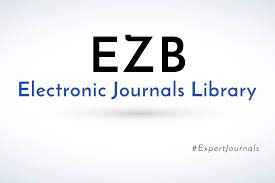The Clinical relevance of Interleukin 6 & hs-CRP in cardiovascular diseases
Keywords:
CVD, Lipid profile, hs-CRP, IL-6Abstract
Background: Cardiovascular diseases (CVDs) remain the leading cause of morbidity and mortality worldwide, necessitating the identification of reliable biomarkers for early detection and risk assessment. Among these, high-sensitivity C-reactive protein (hs-CRP) and interleukin-6 (IL-6) have emerged as crucial inflammatory mediators linked to the pathogenesis and development of CVD. Pro-inflammatory cytokine IL-6 is essential in endothelial dysfunction, atherosclerosis, and plaque instability, while hs-CRP serves as a systemic marker of inflammation, correlating with vascular injury and adverse cardiac events. Elevated levels of these biomarkers have been linked to a higher risk of heart failure, stroke, and myocardial infarction.
Methods: This research consisted of 100 patients with cardiovascular disease (CVD) and 100 healthy controls. After obtaining consent, demographic data, medication history and cardiovascular risk factors were recorded. Clinical parameters including age, sex, height, body weight, and blood pressure were also recorded. Patients with liver diseases, renal dysfunctions, thyroid disorders, HIV and acute inflammatory conditions were excluded. Blood samples were obtained for biochemical examination after a 12-hour fast. IL-6 levels were quantified using an ELISA kit (Ray Biotech, Inc.), Serum hs-CRP was measured using photometric analysis (euroimmun) while lipid profiles were assessed using enzymatic and colorimetric techniques.
Results: Patients with CVD showed significantly raised levels of total cholesterol, LDL, VLDL, triglycerides, hs-CRP, and IL-6 (p<0.0001), while HDL levels were lower. Increased BMI, waist circumference, and blood pressure were also noted. These results reinforce the link between dyslipidemia, inflammation, and CVD, emphasizing their importance in disease progression and risk evaluation.
Conclusion: Elevated hs-CRP and IL-6 levels may help in prediction of cardiovascular risks and further improve the stratification in suspected coronary artery disease (CAD) cases. Managing risk factors in high-risk patients and further research on IL-6’s causal role is essential.
References
Ridker PM, Cushman M, Stampfer MJ, Tracy RP, Hennekens CH. Inflammation, aspirin, and the risk of cardiovascular disease in apparently healthy men. N Engl J Med. 1997;336(14):973–9.
Ridker PM, Hennekens CH, Buring JE, Rifai N. C-reactive protein and other markers of inflammation in the prediction of cardiovascular disease in women. N Engl J Med. 2000;342(12):836–43.
Ridker PM, Rifai N, Stampfer MJ, Hennekens CH. Plasma concentration of interleukin-6 and the risk of future myocardial infarction among apparently healthy men. Circulation. 2000;101(15):1767–72.
Emerging Risk Factors Collaboration. C-reactive protein concentration and risk of coronary heart disease, stroke, and mortality: an individual participant meta-analysis. Lancet. 2010;375(9709):132–40.
Kaptoge S, Seshasai SR, Gao P, Freitag DF, Butterworth AS, Borglykke A, et al. Inflammatory cytokines and risk of coronary heart disease: new prospective study and updated meta-analysis. Eur Heart J. 2014;35(9):578–89.
Ridker PM. A test in context: high-sensitivity C-reactive protein. J Am Coll Cardiol. 2016;67(6):712–23.
Libby P, Rocha VZ. All roads lead to IL-6: a central hub of cardiometabolic signaling. Int J Cardiol. 2018;259:213–5.
Ridker PM. From C-reactive protein to interleukin-6 to interleukin-1: moving upstream to identify novel targets for atheroprotection. Circ Res. 2016;118(1):145–56.
IL6R Genetics Consortium Emerging Risk Factors Collaboration, Sarwar N, Butterworth AS, Freitag DF, Gregson J, Willeit P, et al. Interleukin-6 receptor pathways in coronary heart disease: a collaborative meta-analysis of 82 studies. Lancet. 2012;379(9822):1205–13.
Interleukin-6 Receptor Mendelian Randomisation Analysis (IL6R MR) Consortium, Swerdlow DI, Holmes MV, Kuchenbaecker KB, Engmann JE, Shah T, et al. The interleukin-6 receptor as a target for prevention of coronary heart disease: a Mendelian randomisation analysis. Lancet. 2012;379(9822):1214–24.
Ridker PM, Everett BM, Thuren T, MacFadyen JG, Chang WH, Ballantyne C, et al. Antiinflammatory therapy with canakinumab for atherosclerotic disease. N Engl J Med. 2017;377(12):1119–31.
Ridker PM, MacFadyen JG, Everett BM, Libby P, Thuren T, Glynn RJ, et al. Relationship of C-reactive protein reduction to cardiovascular event reduction following treatment with canakinumab: a secondary analysis from the CANTOS randomized controlled trial. Lancet. 2018;391(10118):319–28.
Ridker PM, Libby P, MacFadyen JG, Thuren T, Ballantyne C, Fonseca F, et al. Modulation of the interleukin-6 signaling pathway and incidence rates of atherosclerotic events and all-cause mortality: analyses from the Canakinumab Anti-inflammatory Thrombosis Outcomes Study (CANTOS). Eur Heart J. 2018;39(38):3499–507.
Zhao TX, Mallat Z. Targeting the immune system in atherosclerosis. J Am Coll Cardiol. 2019;73(14):1691–706.
Lutgens E, Atzler D, Doring Y, Duchene J, Steffens S, Weber C. Immunotherapy for cardiovascular disease. Eur Heart J. 2019;40(48):3937–46.
Ridker PM. Anticytokine agents. Targeting interleukin signaling pathways for the treatment of athererothrombosis. Circ Res. 2019;124(3):437–50.
Kleveland O, Kunszt G, Bratlie M, Ueland T, Broch K, Holte E, et al. Effect of a single dose of the interleukin-6 receptor antagonist tocilizumab on inflammation and troponin T release in patients with non-ST-elevation myocardial infarction: a double-blind, randomized, placebo-controlled phase 2 trial. Eur Heart J. 2016;37(27):2406–13.
Tardif JC, Kouz S, Waters DD, Bertrand OF, Diaz R, Maggioni AP, et al. Efficacy and safety of low-dose colchicine after myocardial infarction. N Engl J Med. 2019;381(26):2497–505.
Albert M, Danielson E, Rifai N, Ridker PM; PRINCE Investigators. Effect of statin therapy on C-reactive protein levels: the pravastatin inflammation/CRP evaluation (PRINCE): a randomized trial and cohort study. JAMA. 2001;286(1):64–70.
Ridker PM, Everett BM, Pradhan A, MacFadyen JG, Solomon DH, Zaharris E, et al.; CIRT Investigators. Low-dose methotrexate for the prevention of atherosclerotic events. N Engl J Med. 2019;380(8):752–62.
Grundy SM, Stone NJ, Bailey AL, Beam C, Birtcher KK, Blumenthal RS, et al. 2018 AHA/ACC/AACVPR/AAPA/ABC/ACPM/ADA/AGS/APhA/ASPC/NLA/PCNA guideline on the management of blood cholesterol: a report of the American College of Cardiology/American Heart Association Task Force on Clinical Practice Guidelines. Circulation. 2019;139(25):e1082-e1143.
Yusuf S, Hawken S, Ounpuu S, Dans T, Avezum A, Lanas F, et al. Effect of potentially modifiable risk factors associated with myocardial infarction in 52 countries (the INTERHEART study): case-control study. Lancet. 2004;364(9438):937-952.
Castelli WP. Epidemiology of coronary heart disease: the Framingham study. Am J Cardiol. 1984;53(2):3C-12C.
Ginsberg HN, Elam MB, Lovato LC, Crouse JR, Leiter LA, Linz P, et al. Effects of combination lipid therapy in type 2 diabetes mellitus. J Clin Endocrinol Metab. 2008;93(11):3727-3749.
Ridker PM, Rifai N, Stampfer MJ, Hennekens CH. Plasma concentration of interleukin-6 and the risk of future myocardial infarction among apparently healthy men. N Engl J Med. 2000;342(12):836-843.
Kaptoge S, Di Angelantonio E, Lowe G, Pepys MB, Thompson SG, Collins R, et al. C-reactive protein concentration and risk of coronary heart disease, stroke, and mortality: an individual participant meta-analysis. JAMA. 2010;303(6):535-546.
Volpato S, Guralnik JM, Ferrucci L, Balfour J, Chaves P, Fried LP, et al. Cardiovascular disease, interleukin-6, and risk of mortality in older women: the Women's Health and Aging Study. Circulation. 2001;103(15):1917-1922.
Maeda K, Tsukui T, Goto A, Iguchi T, Katayama Y, Ikeda Y, et al. Prognostic impact of inflammation-related parameters in patients with acute coronary syndrome. J Am Coll Cardiol. 2012;59(15):1285-1295.
Danesh J, Wheeler JG, Hirschfield GM, Eda S, Eiriksdottir G, Rumley A, et al. C-reactive protein and other circulating markers of inflammation in the prediction of coronary heart disease. N Engl J Med. 2004;350(14):1387-1397.
Liuzzo G, Biasucci LM, Gallimore JR, Grillo RL, Rebuzzi AG, Pepys MB, et al. The prognostic value of C-reactive protein and serum amyloid A protein in severe unstable angina. Circulation. 1994;90(6):2375-2379.
Nishimoto N, Yoshizaki K, Miyasaka N, Yamamoto K, Kawai S, Takeuchi T, et al. Treatment of rheumatoid arthritis with humanized anti–interleukin-6 receptor antibody: a multicenter, double-blind, placebo-controlled trial. Arthritis Res Ther. 2004;6(3):105-111.
Libby P, Ridker PM, Maseri A. Inflammation and atherosclerosis. Nature. 2002;420(6917):868-874.
Hansson GK. Inflammation, atherosclerosis, and coronary artery disease. N Engl J Med. 2005;352(16):1685-1695.
Tracey KJ. The inflammatory reflex. Nature. 2002;420(6917):853-859.
Ridker PM, Rifai N, Rose L, Buring JE, Cook NR. Comparison of C-reactive protein and low-density lipoprotein cholesterol levels in the prediction of first cardiovascular events. Circulation. 2003;108(17):2292-2297.
Gabay C, Kushner I. Acute-phase proteins and other systemic responses to inflammation. N Engl J Med. 1999;340(6):448-454.
Lavie CJ, Milani RV, Ventura HO. Obesity and cardiovascular disease: risk factor, paradox, and impact of weight loss. J Am Coll Cardiol. 2009;53(21):1925-1932.
Hall JE, do Carmo JM, da Silva AA, Wang Z, Hall ME. Obesity-induced hypertension: interaction of neurohumoral and renal mechanisms. Hypertension. 2015;66(3):502-510.
Montecucco F, Steffens S, Burger F, Pelli G, Monaco C, Mach F. The murine model of atherosclerosis for imaging and treatment of inflammation-associated vascular diseases. Trends Cardiovasc Med. 2013;23(8):336-345.
Published
How to Cite
Issue
Section
License
Copyright (c) 2025 Randhir Kumar, Rakesh Kumar, Shaily Shilpa, Shailesh Kumar, Dr.Samir Kumar, Sweta Muni, Namrata Kumari

This work is licensed under a Creative Commons Attribution-NonCommercial-NoDerivatives 4.0 International License.





















